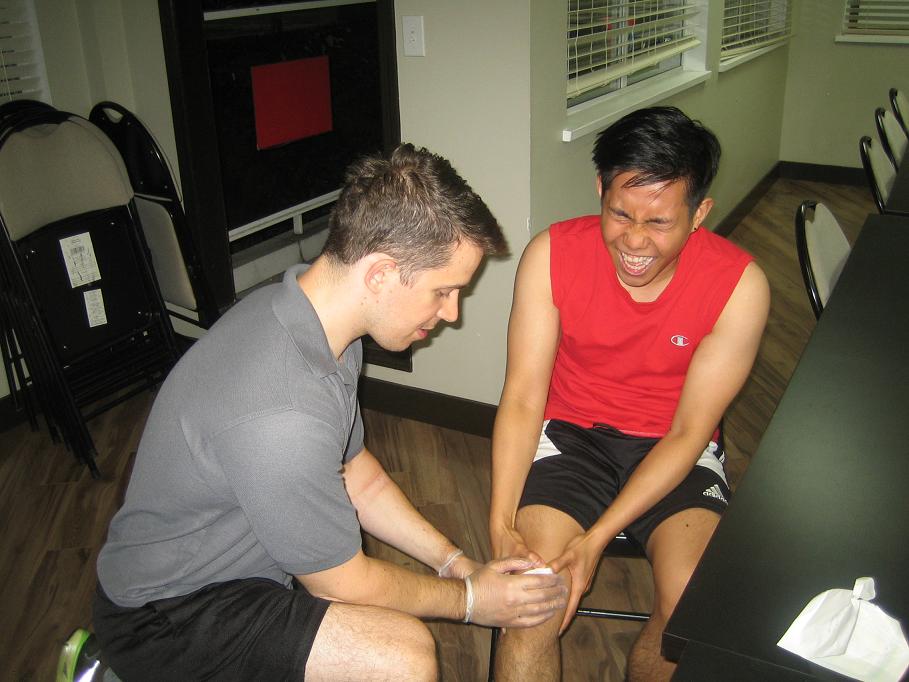A road rash is an abrasion due to a fall or brushing against rough surfaces while riding a biking or motorcycle. The friction produced causes the uppermost layer of the skin to peel away. The wound looks raw, reddened, bloody and inflamed.
The area is painful for several days. Sometimes, the depth of the rash causes nerve cell damage and there is no feeling at all. Take note that the skin found around the edges of the road rash can be severely painful.
Treatment

- If an accident occurs in a dangerous place such as in the middle of a road, move to a safer area or off the road to prevent the risk of further injury.
- If there is a head injury such as concussion, seek medical help immediately.
- In case the wound is spurting blood, apply pressure using a piece of clothing or other material to minimize bleeding. Change the cloth or gauze if it blood soaks it. If bleeding continues after 10 minutes, seek medical help immediately.
- Wash hands properly before touching the wound of the affected person to prevent causing an infection. Wash hands using warm water and soap. Rinse the wound under running cool water or pouring water over it. Wash away loose dirt and debris in the area. Wash the area round the wound using an antibacterial soap to wash away dirt and debris. Avoid getting the soap into the wound to prevent irritation.
- Remove any sand, dirt and splinters inside the wound using tweezers. First, clean and sterilize the tweezers by soaking in isopropyl alcohol. Rinse the wound using cool water when the debris are removed from the wound.
- Splinters or debris that are embedded deep in the wound and there is difficulty with removal, seek medical help immediately.
Additional measures
- Apply the prescribed antibiotic cream such as neomycin especially when the wound is dry to prevent infections and promote fast healing of the condition. If a topical antibiotic cream cannot be used, apply petroleum jelly or on the affected area to keep it moist as it heals.
- Cover the wound using a non-stick bandage or sterile gauze and secure using an elastic band or tape. Change bandages every day especially when it is wet and dirty and reapply the antibiotic cream every day.
- Elevate the wound above the level of the heart as much as possible to lessen the swelling and pain on the initial 24-40 hours after the accident especially when the injury is severe and infected.
- Take the prescribed over-the-counter pain medications such as ibuprofen or acetaminophen to lessen the pain and inflammation.
- Drink more fluids at least 6-8 glasses of water every day to keep the body hydrated.
Disclaimer / More Information
The material posted on this page on a road rash is for learning purposes only. Learn to provide proper wound care for a road rash by taking a first aid and CPR class with one of our training providers.
FACT CHECK
https://www.healthline.com/health/road-rash-treatment
https://www.bicycling.com/training/a20022591/how-to-treat-road-rash-and-prevent-scarring/
https://www.verywellfit.com/skin-abrasions-and-road-rash-treatment-3119252
